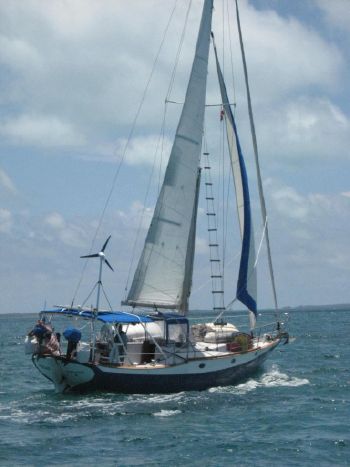
We Read Chapter On Dinghies And Tenders
- In Baja, South Pacific, and the Indian Ocean, cruisers spend ~85% of their time at anchor.
- Inflatables
- are more stable which is nice for climbing aboard from the water (after snorkeling, say) and for loading heavy supplies like water.
- Sitting on the side makes for a wet butt.
- Get punctured by rocks, coral, dogs.
- Take a long time to inflate costing precious minutes if you go aground and need to kedge your boat off before the ebb tide. (What's kedging?)
- Can get blown out to sea if the motor fails (very difficult to row to into the wind)
- Hard boats
- Are more easily rowed, even to into the wind.
- Can be rigged with sails.
- Are much sturdier.
- Are much bulkier.
- Are heavier.
- Are quickly deployed.
- Can be made more stable with the addition of a flotation collar
- Also look at porta-botes.
Question: Do davits rule out windvanes? What's the difference between a windvane and an autopilot?